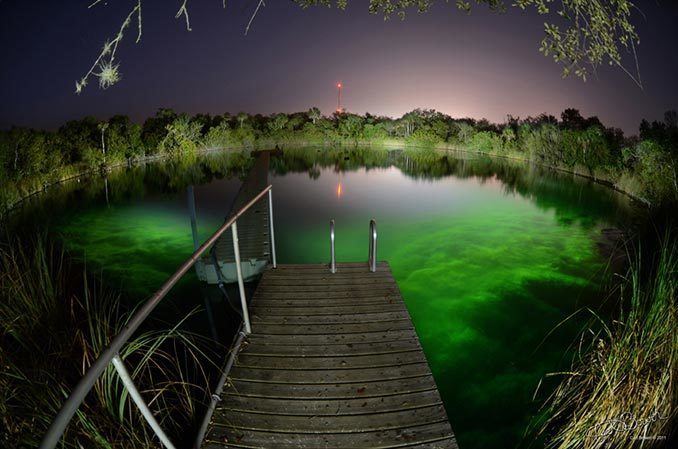Area 4 ha Nearest city North Port | NRHP Reference # 79000692 Country United States of America Added to NRHP 10 July 1979 | |
 | ||
Similar Warm Mineral Springs, Hospital Hole, Cladh Hallan, Miami City Hospital - Building, Cobb Stadium | ||
Little salt spring north port florida
Little Salt Spring is an archaeological and paleontological site in North Port, Florida, United States. It is located directly off Price Boulevard between US 41 and I-75 adjacent to Heron Creek Middle School in the city of North Port. On July 10, 1979, it was added to the National Register of Historic Places.
Contents
- Little salt spring north port florida
- Map of Little Salt Spring North Port FL USA
- Description
- Prehistoric human use
- References
Map of Little Salt Spring, North Port, FL, USA
Description
Little Salt Spring is a feature of the karst topography of Florida, specifically an example of a sinkhole. It is classified as a third magnitude spring. The numerous deep vents at the bottom of the sinkhole feed oxygen-depleted groundwater into it, producing an anoxic environment below a depth of about 5 m (16.4 ft). This fosters the preservation of Paleo-Indian and early Archaic artifacts and ecofacts, as well as fossil bones of the extinct megafauna once found in Florida.
Originally it was thought that Little Salt Spring was a shallow freshwater pond, but in the 1950s SCUBA divers discovered that it was a true sinkhole extending downward over 200 ft (61 m), similar to the cenotes of the Yucatán Peninsula (another karst region). The actual depth of the surface pond is forty feet (12.2 m) with a central shaft dropping vertically to an inverted cone with a maximum determined depth at the outer edges of 245 feet (75 m). There are ledges around the wall of the cenote at 16 and 27 meters (52 and 89 feet) below the present water level.
The site has been owned by the University of Miami since 1980, with research performed by the Rosenstiel School of Marine and Atmospheric Science. In 2013, Miami began considering selling the site to Sarasota County due to funding being cut towards maintaining the site and its facilities.
Prehistoric human use
The water level in the spring has varied over time. Twelve to thirteen thousand years ago the ocean level was about 100 meters (more than 300 feet) lower than at present, drawing down the water table in Florida, and the water level in Little Salt Spring was 27 meters (89 feet) lower than at present. The basin around the spring and a slough extending away from it are filled with moist, soft peat. Hundreds of burials dating from 5,200 to 6,800 years ago have been found in the slough. As has happened in other wetland burials in Florida, such as at the Windover Archaeological Site, brain matter survived in many of the skulls. In the 1970s the overturned shell of an extinct giant land tortoise was found on the 27-meter (89 ft) ledge. A wooden stake had been driven between the carapace and the plastron, and there is evidence of a fire under the tortoise. It appears that the tortoise had been cooked in its shell. The radiocarbon date for the wooden stake was 12,030 years ago, and for a bone from the tortoise, 13,450 years ago. Large numbers of human bones have been recovered from the spring itself, but were not collected under controlled conditions.
